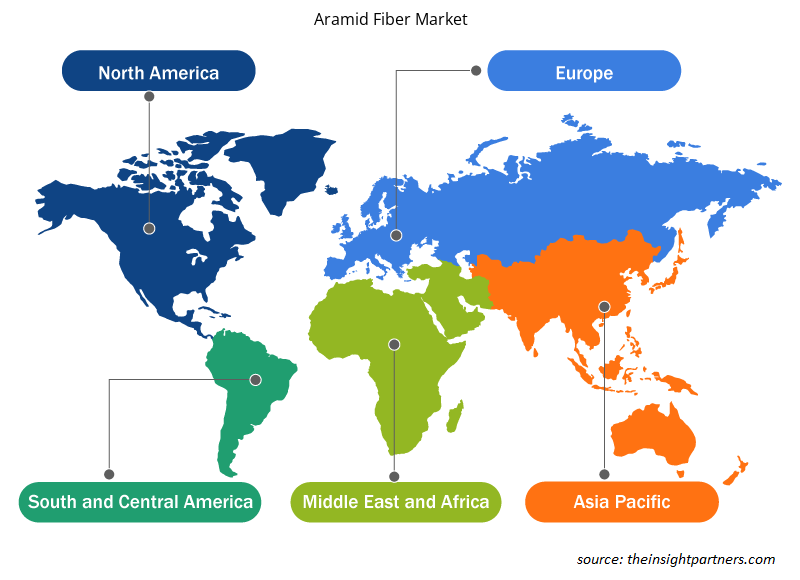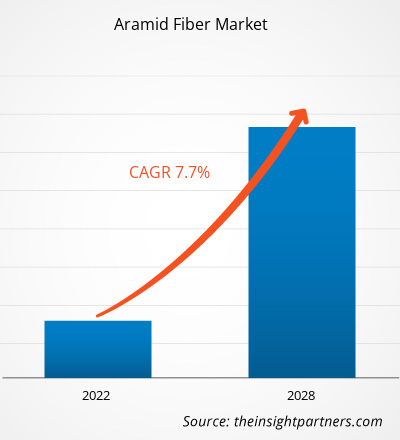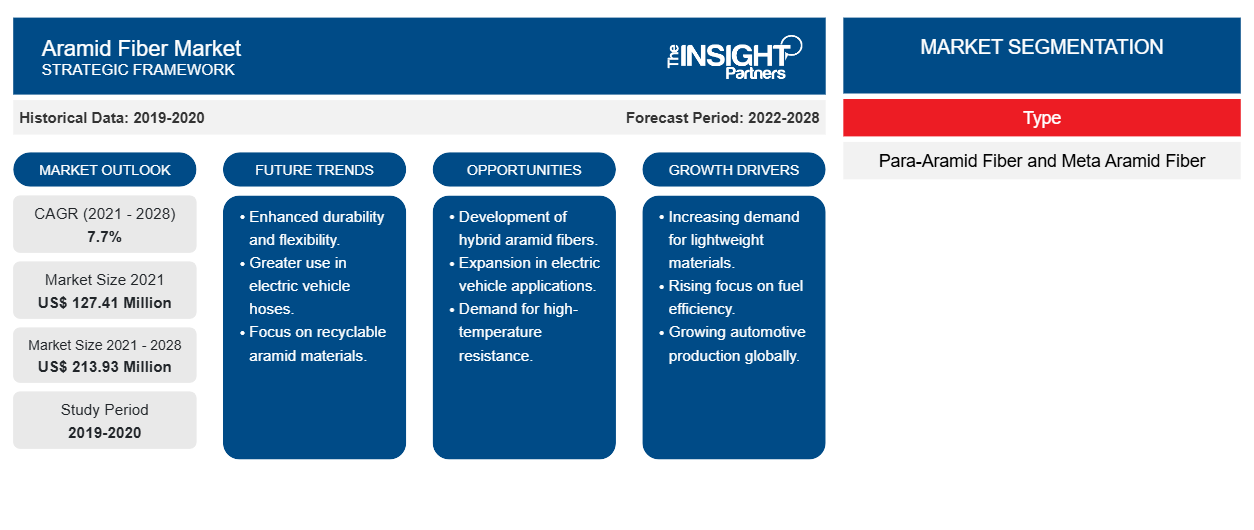Der Markt für Aramidfasern für Automobilschläuche soll von 127,41 Millionen US-Dollar im Jahr 2021 auf 213,93 Millionen US-Dollar im Jahr 2028 anwachsen; von 2021 bis 2028 dürfte er voraussichtlich mit einer durchschnittlichen jährlichen Wachstumsrate von 7,7 % wachsen.aramid fiber market for automotive hoses is projected to reach US$ 213.93 million by 2028 from US$ 127.41 million in 2021; it is expected to grow at a CAGR of 7.7% from 2021 to 2028.
Aramidfasern sind Hochleistungskunstfasern mit Molekülen, die sich durch relativ steife Polymerketten auszeichnen. Diese Moleküle sind durch starke Wasserstoffbrücken miteinander verbunden, die mechanische Spannungen effizient übertragen. Der Begriff „Aramid“ bedeutet „aromatisches Polyamid“. Aramidfasern erscheinen als leuchtend goldgelbe Filamente. Diese Fasern werden zur Verstärkung von Reifen, Antriebsstrangkomponenten, Turboladerschläuchen, Bremsbelägen, Riemen, Dichtungen, Kupplungen, Sitztextilien, Elektronik, Sitzsensoren und Hybridmotormaterialien verwendet.
Der Aramidfasermarkt für Automobilschläuche im asiatisch-pazifischen Raum wird im Prognosezeitraum voraussichtlich mit der höchsten durchschnittlichen jährlichen Wachstumsrate wachsen. Der regionale Markt wird voraussichtlich in naher Zukunft ein bemerkenswertes Wachstum erleben, da die Automobilindustrie schnell wächst und die Autoteileindustrie insbesondere in Ländern wie China, Südkorea und Indien floriert. Mit der zunehmenden Produktion von Elektrofahrzeugen steigt auch die Anzahl der Teile und Komponenten im Fahrzeug, was das Wachstum des Aramidfasermarktes für Automobilschläuche in der Region weiter ankurbeln wird.
Passen Sie diesen Bericht Ihren Anforderungen an
Sie erhalten kostenlos individuelle Anpassungen an jedem Bericht, einschließlich Teilen dieses Berichts oder einer Analyse auf Länderebene, eines Excel-Datenpakets sowie tolle Angebote und Rabatte für Start-ups und Universitäten.
-
Holen Sie sich die wichtigsten Markttrends aus diesem Bericht.Dieses KOSTENLOSE Beispiel umfasst eine Datenanalyse von Markttrends bis hin zu Schätzungen und Prognosen.
Auswirkungen der COVID-19-Pandemie auf den Aramidfasermarkt für Automobilschläuche
Die COVID-19-Pandemie hatte 2020 erhebliche Auswirkungen auf den Aramidfasermarkt für Automobilschläuche. Während der Pandemie stellte die Automobilindustrie ihre Produktionsprozesse vorübergehend ein, was zu einem Rückgang der Nachfrage nach Produkten aus Aramidfasern führte. Darüber hinaus hat die globale Automobilindustrie in letzter Zeit einen Rückgang erlebt. Laut OICA wurden 2020 weltweit ~77,62 Tausend Fahrzeuge produziert, verglichen mit 92,18 Tausend Fahrzeugen im Jahr 2019, was einem Produktionsrückgang von 15,8 % entspricht. Der Rückgang ist auf eine geringere Produktion in großen Automobilzentren wie den USA, China, Japan und Deutschland zurückzuführen, die 2020 im Vergleich zu 2019 einen Rückgang von 19 %, 2 %, 17 % bzw. 24 % verzeichneten. Seit dem vierten Quartal 2020 hat die Branche jedoch an Dynamik gewonnen und dürfte aufgrund der steigenden Nachfrage nach Elektrofahrzeugen in den kommenden Jahren ein deutliches Wachstum verzeichnen.
Markteinblicke
Steigende Nachfrage aufgrund des Wachstums des Kraftstoffmarktes in der Automobilindustrie
Aramidfasern sind ein synthetisches Polymer, das zur Klasse der starken synthetischen und hitzebeständigen Fasern gehört. Sie bieten eine gute Abrieb- und Lösungsmittelbeständigkeit und weisen einen hohen Schmelzpunkt, eine geringe Leitfähigkeit und eine geringe Entflammbarkeit auf. In der Automobilindustrie werden Aramidfasern zunehmend in Anwendungen wie Reifen, Turboladerschläuchen, Antriebsstrangkomponenten, Riemen, Bremsbelägen, Dichtungen, Kupplungen, Sitzbezügen, Elektronik, Sitzsensoren und Hybridmotormaterialien eingesetzt. Diese Fasern werden zur Verstärkung von Getriebe-, Kühler- und Turboladerschläuchen verwendet. Die mit Aramidfasern verstärkten Schläuche sind stärker und langlebiger und halten den härtesten Bedingungen stand.
Bei der Auto- oder Fahrzeugproduktion kommen zahlreiche Materialien zum Einsatz, wie Eisen, Aluminium, Kunststoff, Stahl und Glas. Aramidfasern werden aufgrund ihres geringen Gewichts, ihrer hohen Zugfestigkeit und ihrer überlegenen Korrosionsbeständigkeit häufig als Ersatz für Aluminium und Stahl verwendet. Hersteller in der Automobilindustrie sind ständig bestrebt, innovative Produkte einzuführen, um in den von ihnen bedienten Märkten wettbewerbsfähig zu bleiben. Sicherheitsaspekte, hervorragende Leistung und das Bedürfnis nach Nachhaltigkeit zwingen die Automobilindustrie, qualitativ hochwertige Produkte zu entwickeln. Sie müssen eine einwandfreie Leistung der Automobilschläuche ungeachtet der zunehmend schwierigen Bedingungen sicherstellen. Beispielsweise müssen Schlauchsysteme im Motorraum immer härteren Betriebsbedingungen standhalten; daher müssen die Schlauchverstärkungsgarne eine überragende Festigkeit sowie chemische, thermische und dimensionale Stabilität aufweisen. Aramidfasern tragen dazu bei, die Sicherheit, Leistung und Haltbarkeit von Automobilkomponenten wie Automobilschläuchen und Automobilriemen zu verbessern. Darüber hinaus tragen sie dazu bei, die Produktlebensdauer zu verlängern, die Produktleistung zu verbessern usw.
Einblicke in Materialtypen
Der Markt für Aramidfasern für Automobilschläuche ist je nach Typ in Para-Aramidfasern und Meta-Aramidfasern unterteilt. Das Para-Aramid-Segment verzeichnet im Zeitraum 2021–2028 eine höhere durchschnittliche jährliche Wachstumsrate (CAGR) auf dem Markt. Para-Aramide haben eine hohe Zugfestigkeit (die höchste Belastung, der ein Material standhalten kann) und ein hohes Elastizitätsmodul (die Tendenz eines Materials, sich bei Krafteinwirkung zu verformen). Darüber hinaus sind Para-Aramidfasern steifer und haben eine höhere Zähigkeit sowie Festigkeit als Meta-Aramidfasern. Sie sind jedoch chemisch empfindlich, und Säuren, Basen und Bleichmittel schwächen die Festigkeit von Para-Aramid-Polyamid. Einige Beispiele für Para-Aramidfasern sind Kevlar, Technora, Twaron und Herron. Die Nachfrage nach Para-Aramidfasern wird durch ihre zunehmende Verwendung in Sicherheitsanwendungen angetrieben. Aufgrund ihrer ultrahohen Festigkeit und ihrer starren und hochorientierten Molekularstruktur werden sie in kritischen Anwendungen wie Schutzkleidung, einschließlich kugelsicherer Westen, Helmen und Fahrzeugpanzerungen, eingesetzt.
Einige der Unternehmen, die auf dem Aramidfasermarkt für Automobilschläuche tätig sind, sindContitech Ag, Dupont, Teijin Limited, Yokohama Rubber Co., Ltd., Schaeffler Ag, Bando Chemical Industries Ltd., Hutchinson Sa, Toyobo Co. Ltd., Aramid Hpm, LLC, Fiberline und Kolon Industries, Inc. Die wichtigsten Unternehmen führen Fusionen und Übernahmen sowie Forschungs- und Entwicklungsstrategien durch, um ihren Kundenstamm zu erweitern und bedeutende Anteile am Weltmarkt zu gewinnen, was es ihnen außerdem ermöglicht, ihren Markennamen weltweit zu behaupten.
Bericht-Spotlights
- Progressive Branchentrends auf dem Aramidfasermarkt für Automobilschläuche helfen den Akteuren bei der Entwicklung effektiver langfristiger Strategien
- In Industrie- und Entwicklungsländern angewandte Strategien für Unternehmenswachstum
- Quantitative Analyse des Aramidfasermarktes für Automobilschläuche von 2020 bis 2028
- Schätzung der weltweiten Nachfrage nach Aramidfasern für Automobilschläuche
- Porters Analyse zur Veranschaulichung der Wirksamkeit der in der Branche tätigen Käufer und Lieferanten
- Aktuelle Entwicklungen zum Verständnis des wettbewerbsorientierten Marktszenarios
- Markttrends und -aussichten sowie Faktoren, die das Wachstum des Aramidfasermarktes für Automobilschläuche vorantreiben und bremsen
- Unterstützung im Entscheidungsprozess durch Aufzeigen von Marktstrategien, die das kommerzielle Interesse untermauern und zum Marktwachstum führen
- Die Größe des Aramidfasermarktes für Automobilschläuche an verschiedenen Knotenpunkten
- Detaillierte Übersicht und Segmentierung des Marktes sowie der Dynamik der Aramidfaser für Automobilschläuche
- Größe des Aramidfasermarktes für Automobilschläuche in verschiedenen Regionen mit vielversprechenden Wachstumschancen
Regionale Einblicke in den Aramidfasermarkt
Die regionalen Trends und Faktoren, die den Aramidfasermarkt während des Prognosezeitraums beeinflussen, wurden von den Analysten von Insight Partners ausführlich erläutert. In diesem Abschnitt werden auch die Marktsegmente und die Geografie des Aramidfasermarkts in Nordamerika, Europa, im asiatisch-pazifischen Raum, im Nahen Osten und Afrika sowie in Süd- und Mittelamerika erörtert.

- Erhalten Sie regionale Daten zum Aramidfasermarkt
Umfang des Aramidfaser-Marktberichts
| Berichtsattribut | Details |
|---|---|
| Marktgröße im Jahr 2021 | 127,41 Millionen US-Dollar |
| Marktgröße bis 2028 | 213,93 Millionen US-Dollar |
| Globale CAGR (2021 - 2028) | 7,7 % |
| Historische Daten | 2019-2020 |
| Prognosezeitraum | 2022–2028 |
| Abgedeckte Segmente |
Nach Typ
|
| Abgedeckte Regionen und Länder |
Nordamerika
|
| Marktführer und wichtige Unternehmensprofile |
|
Marktteilnehmerdichte: Der Einfluss auf die Geschäftsdynamik
Der Markt für Aramidfasern wächst rasant, angetrieben durch die steigende Nachfrage der Endverbraucher aufgrund von Faktoren wie sich entwickelnden Verbraucherpräferenzen, technologischen Fortschritten und einem größeren Bewusstsein für die Vorteile des Produkts. Mit steigender Nachfrage erweitern Unternehmen ihr Angebot, entwickeln Innovationen, um die Bedürfnisse der Verbraucher zu erfüllen, und nutzen neue Trends, was das Marktwachstum weiter ankurbelt.
Die Marktteilnehmerdichte bezieht sich auf die Verteilung von Firmen oder Unternehmen, die in einem bestimmten Markt oder einer bestimmten Branche tätig sind. Sie gibt an, wie viele Wettbewerber (Marktteilnehmer) in einem bestimmten Marktraum im Verhältnis zu seiner Größe oder seinem gesamten Marktwert präsent sind.
Die wichtigsten auf dem Aramidfasermarkt tätigen Unternehmen sind:
- ARAMID HPM, LLC
- ARTEL RUBBER COMPANY
- BEAVER HERSTELLUNGSUNTERNEHMEN
- CONTINENTAL AG
- DUPONT DE NEMOURS, INC.
Haftungsausschluss : Die oben aufgeführten Unternehmen sind nicht in einer bestimmten Reihenfolge aufgeführt.

- Überblick über die wichtigsten Akteure auf dem Aramidfasermarkt
Aramidfasermarkt für Automobilschläuche – nach Typ
- Para-Aramidfaser
- Meta-Aramidfaser
Firmenprofile
- Contitech Ag
- Dupont
- Teijin Limited
- Yokohama Rubber Co., Ltd.
- Schaeffler Ag
- Bando Chemical Industries Ltd.
- Hutchinson Sa
- Toyobo Co. Ltd.
- Aramid Hpm, Llc
- Faserlinie
- Historische Analyse (2 Jahre), Basisjahr, Prognose (7 Jahre) mit CAGR
- PEST- und SWOT-Analyse
- Marktgröße Wert/Volumen – Global, Regional, Land
- Branchen- und Wettbewerbslandschaft
- Excel-Datensatz
Aktuelle Berichte
Erfahrungsberichte
Grund zum Kauf
- Fundierte Entscheidungsfindung
- Marktdynamik verstehen
- Wettbewerbsanalyse
- Kundeneinblicke
- Marktprognosen
- Risikominimierung
- Strategische Planung
- Investitionsbegründung
- Identifizierung neuer Märkte
- Verbesserung von Marketingstrategien
- Steigerung der Betriebseffizienz
- Anpassung an regulatorische Trends























 Kostenlose Probe anfordern für - Aramidfasermarkt
Kostenlose Probe anfordern für - Aramidfasermarkt